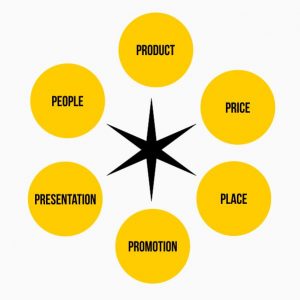What is a business plan?
A business plan is a formal report of a business. It contains the goals, the strategy, the tactics, and essentially, it tells you how you’re going to accomplish the goals.
Think of a business plan like this. Imagine I ask you to write what are your goals, what resources you need to accomplish those goals and how are you going to use those resources to achieve your goals.
Next, you make a report containing this information. There you have it. It’s a business plan.
Who will read your store business plan?
This is very important, for two reasons.
And the two reasons are detail and accuracy.
But first, let’s see who will read the plan. Usually, there are two groups:
- Investors, bankers, government agencies.
- You and your partners, if you have any.
If you’re making the plan for investors, bankers or government agencies, you’ll need a detailed one and accurate. And by accurate, I don’t mean that everything you say, must happen. No. A business plan is not a promise or a vision of the future. It is a guess. But a guess based on accurate data that you have in the present.
Why, always a business plan?
If you’re making the store business plan for yourself, you will not need much detail, neither a very formal report. But do it anyway.
And the main reason is that when you start making the plan, you’ll find many problems that you didn’t thought.
But there is one more reason. When you write down your ideas, you’ll release your thoughts.
Let me tell you what happens when you write something, you stop overthinking. Until you write your ideas, you are always thinking about them because you have fear of forgetting them. But when you write it, you free your mind for other thoughts.
How to make a store business plan – The steps.
- If you’re making the plan for third parties, start with your professional information: previous jobs, age, education, skills, etc
- Explain the general idea. For example: our project is to open a clothing store for young adults who need to wear formal clothes at work.
- Tell who will be your ideal customers. Be specific, namely: age, income, hobbies, etc. If you have more than one ideal customer, create a “persona” for each type.
- Enumerate the main competitors in your market
- The financials. You’ll have to estimate how much capital you’ll need, and when it will be needed. Schedule the investments to be made. And preview costs and sales.
- Legal aspects: type of company, trade marks, etc
- Make the marketing plan. This is, probably, the most important point. In reality, you should do the marketing plan before the financial plan.
The marketing plan
This step is so important, that I decided to separate it from the other steps.
A marketing plan will answer the question: How will you achieve the sales you need? And of course, this is the most important answer.
It is easier to systematize the marketing plan, if you use the P’s approach.
When I studied marketing for the first time (in the 90’s) there were only 4 P’s. But now, some marketers use 5, 6 or even 7 P’s. I think the better approach to retail is 6 P’s. So, let’s use 6 P’s
Who are the six P’s?
The six P’s are nothing more than five words with a P letter: Product, Price, Promotion, Place, Presentation and People. These are the 6 essential elements of your marketing plan. Let’s take a look at each one.

1 – Products
- What products will you sell?
- Are there different styles per family product? On average, how many?
- What is the quality of the products?
- Where will you buy them?
- Will they have your brand in it (the brand of your store), or other brands?
- How many sizes?
- Etc.
2 – Prices
- Will you have a unique price for each product family, or a different price for each product?
- How will your price be, compared to other competitors?
- How will you calculate the price?
- Will you make sales?
- Etc
3 – Promotion
- How will you capture new clients? Window? Flyers?
- Will you advertise your products? Where?
- What will be your message?
- How about social media?
- And Public relations?
- Etc.
4 – Place
- In case of a physical store, where are you going to search for a commercial space?
- Size of store?
- Any particular requirement?
- In case of an e-store, what platform will you use?
- Etc.
5 – Presentation
- What kind of decoration will your store use?
- How about the presentation of the products?
- And the window displays?
- Etc.
6 – People
- How many salespeople will you need?
- How are you going to recruit them?
- And train them?
- What kind of customer service will you use?
- Etc.
These are some of the questions you need to answer, but there are many more. Try to think a few more.
After you answer these questions, you have made the Marketing Plan.
It’s no big deal. Isn’t it?
